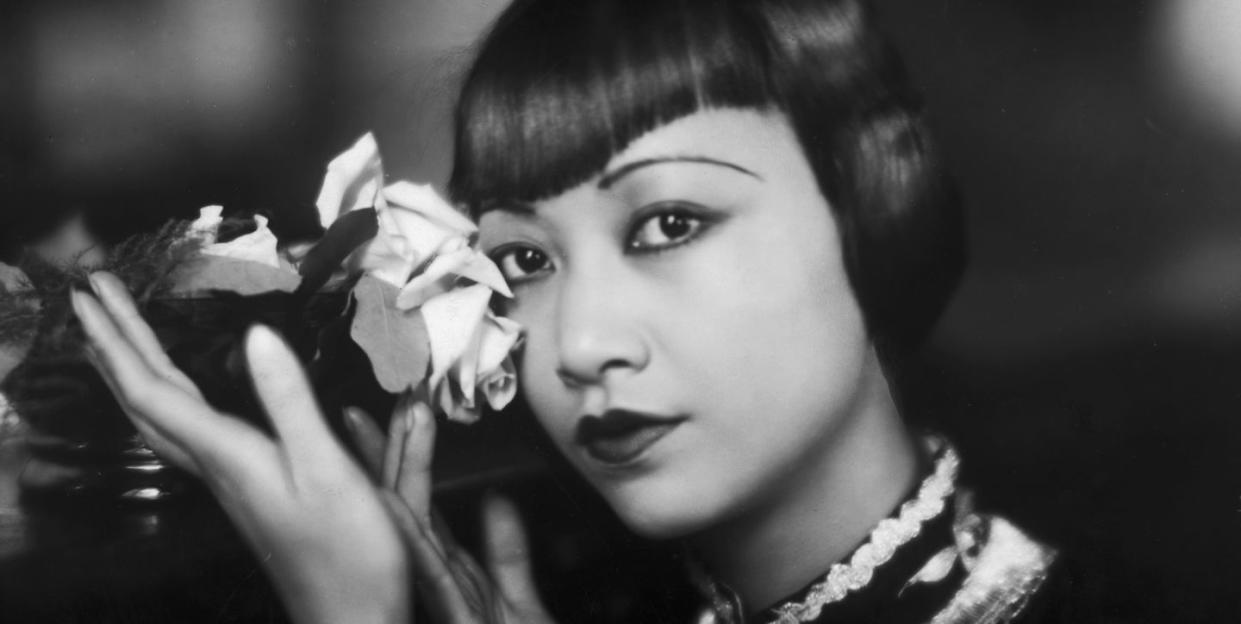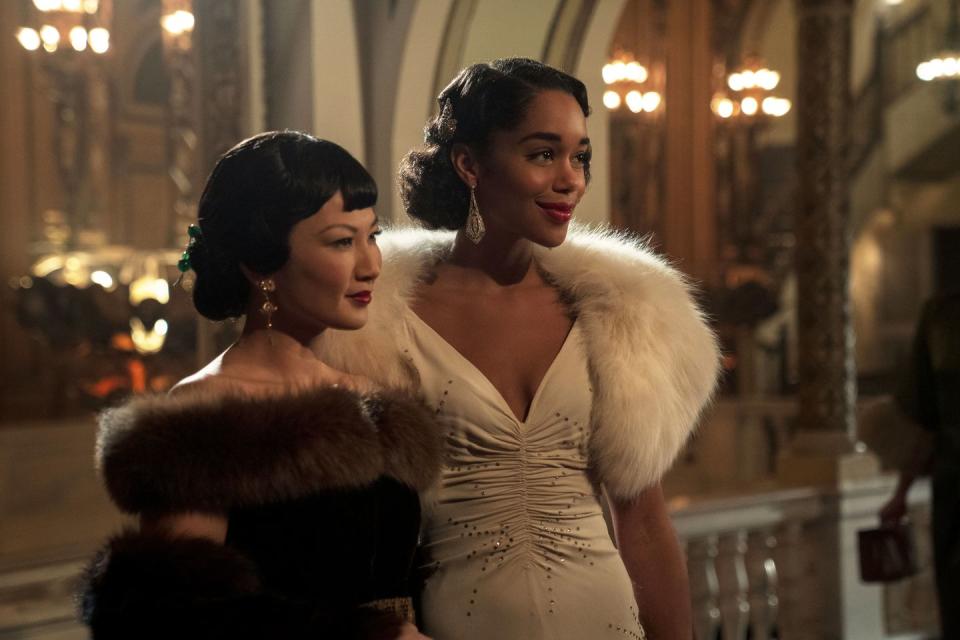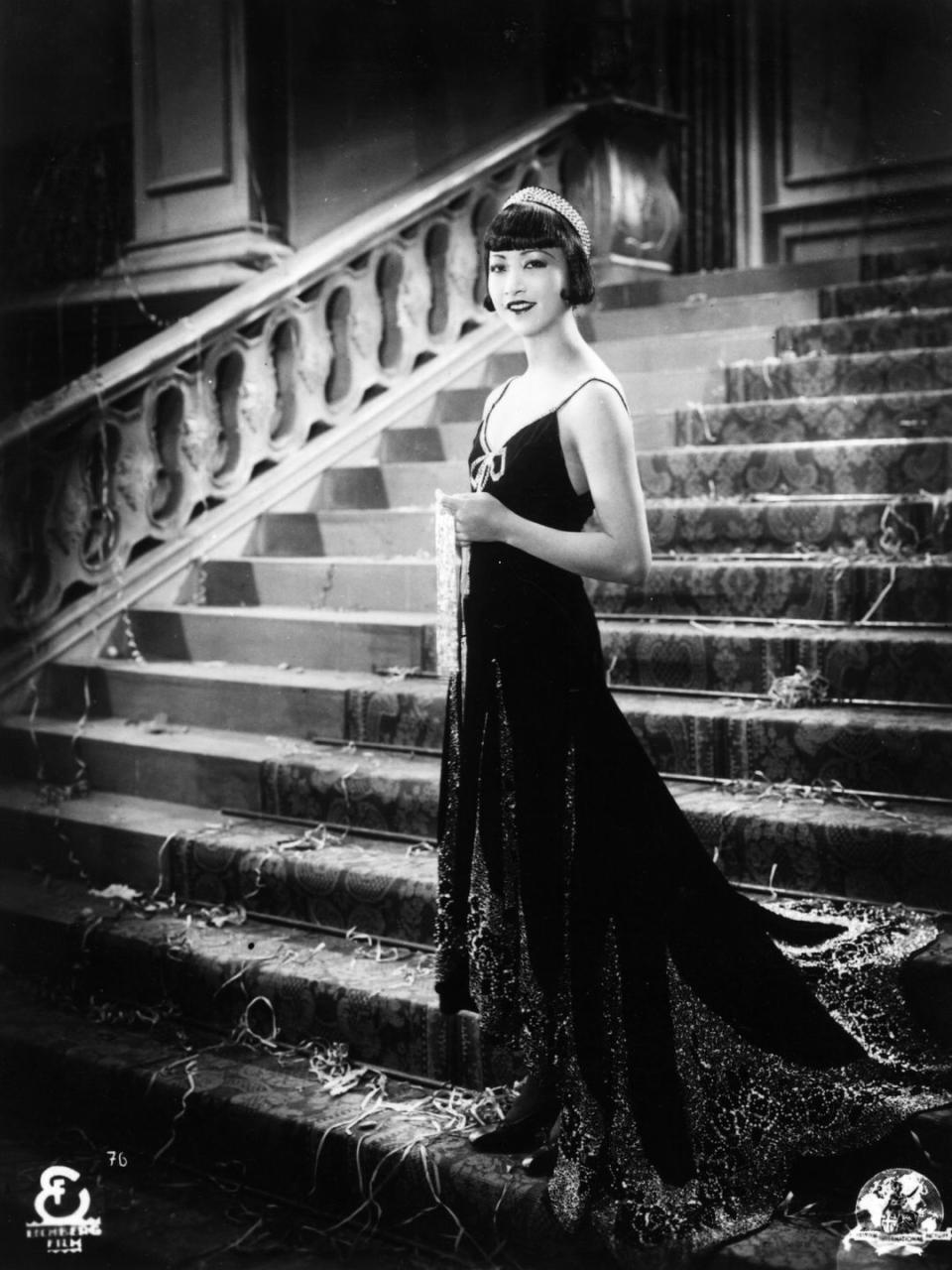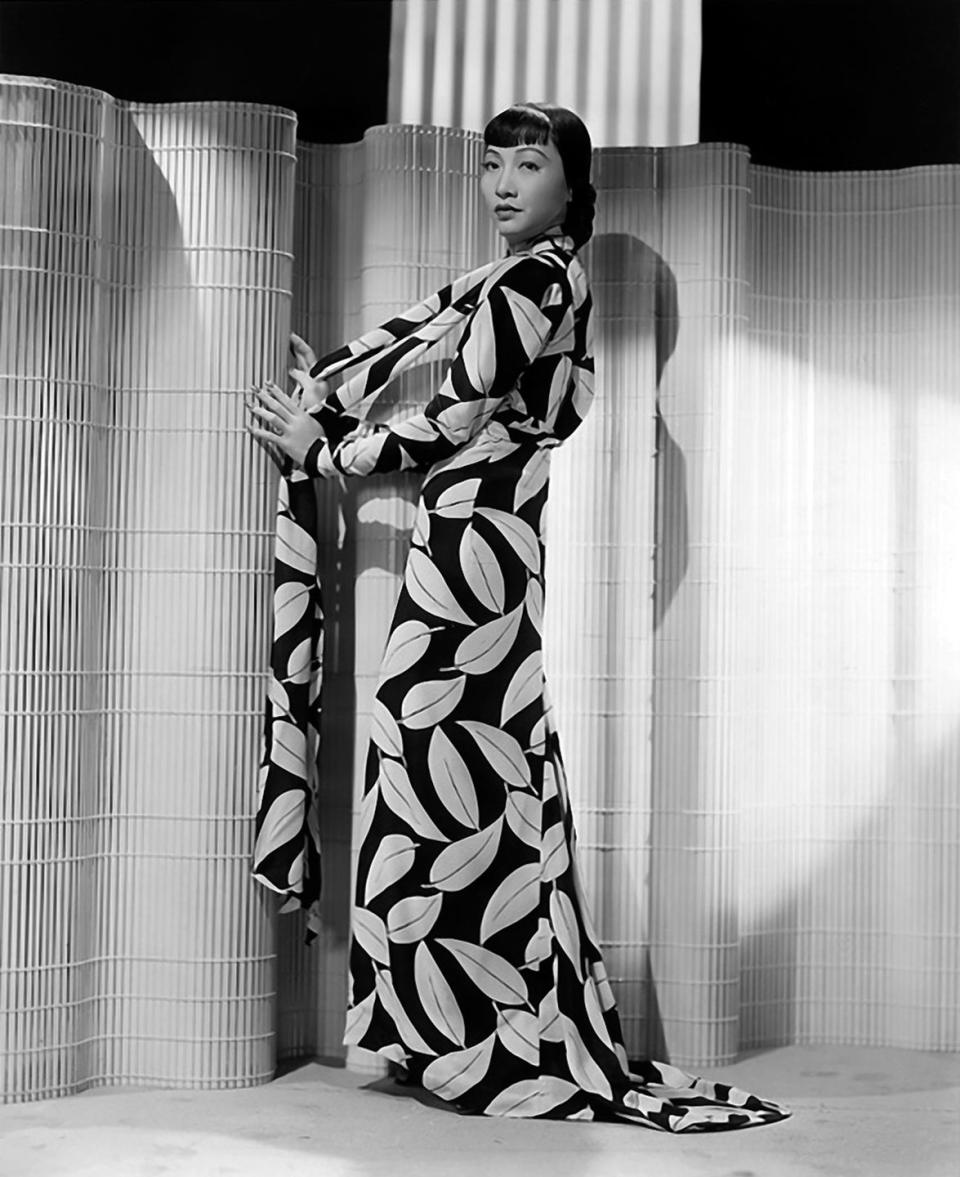Who Was Film Star Anna May Wong, Played by Michelle Krusiec in Netflix's 'Hollywood'?

While Netflix's Hollywood is a work of fiction, it incorporates the stories of several real-life figures working in the entertainment industry in the 1940s and '50s. Among them is film star Anna May Wong, played by Michelle Krusiec, who battled to find her footing in a business that only offered stereotypical roles to Asian-American performers. In recent years, Wong's work has finally been given the appreciation and credit it deserved. Here's what you need to know about her life.
Wong began her career in silent films.
Born in 1905, Wong was raised in Los Angeles and began acting in her teens. She starred in the first-ever Technicolor movie, 1922's The Toll of the Sea (based on the opera Madame Butterfly), but found Hollywood reluctant to cast an Asian woman in many leading roles. The supporting parts she played, like Princess Tiger Lily in a 1924 silent adaptation of Peter Pan and an enslaved woman in the Douglas Fairbanks film The Thief of Bagdad, gained her notice and a significant fan base, but she was limited by one-dimensional parts that exoticized her and fetishized her culture. She was also boxed out of virtually all major roles because of miscegenation laws prohibiting interracial couplings—she could not kiss a white leading man onscreen. Wong's experience is explored in a recent episode of PBS's American Masters.

She sought fame in Europe.
Tired of her treatment in Hollywood, Wong moved to Europe and became a star in Germany. Appearing on both stage and in films like 1928's Song and 1929's Pavement Butterfly, Wong found Germans more willing to give her starring roles. In 1929, she appeared on the London stage alongside Laurence Olivier in the play The Chalk Circle. She filmed five movies in England, including Picadilly, which was her last silent movie and consider by many to be her greatest work.
The unjust loss of a much-wanted role left a terrible scar.
Wong returned to Los Angeles in 1930 when she was offered a contract with Paramount Studios. She appeared in a starring role on Broadway and in the stereotypical role of Fu Manchu's daughter in 1931's Daughter of the Dragon. In 1932, Shanghai Express gave her a chance to work with Marlene Dietrich, but despite her success, Wong remained underpaid, cast aside for plum roles and forced to deal with racism and blatant disrespect, The Guardian reports.
"I was so tired of the parts I had to play," she said in a 1933 magazine interview. "Why is it that the screen Chinese is nearly always the villain of the piece, and so cruel a villain—murderous, treacherous, a snake in the grass. We are not like that. How should we be, with a civilization that’s so many times older than that of the West."

According to the L.A. Times, when casting began for the 1937 film adaptation of Pearl S. Buck's The Good Earth, the studio refused to consider Wong and cast instead white actress Luise Rainer, who received an Oscar for the role. Wong was devastated. She said she was asked to audition to play Lotus, a part she felt played into stereotypical notions of Asian immorality. "I’ll be glad to take the test, but I won’t play the part," she said in an interview. "If you let me play O-lan, I’ll be very glad. But you’re asking me—with Chinese blood—to do the only unsympathetic role in the picture, featuring an all-American cast portraying Chinese characters," she said.
She revived her career after a brief retirement.

After a high-profile year-long trip to China that Wong documented in articles for The New York Herald Tribune and The Los Angeles Times, she returned to Hollywood and appeared in several smaller films like 1937's Daughter of Shanghai and 1939's King of Chinatown, The New York Times recalled in her obituary. She took a years-long break from acting before turning to TV in the '50s, becoming the first Asian-American series lead with The Gallery of Madame Liu-Tsong. According to the L.A. Times, She was later cast as Madame Liang in the film adaptation of Rodgers and Hammerstein's Flower Drum Song, but she died of a heart attack in 1961, before filming began.
You Might Also Like

